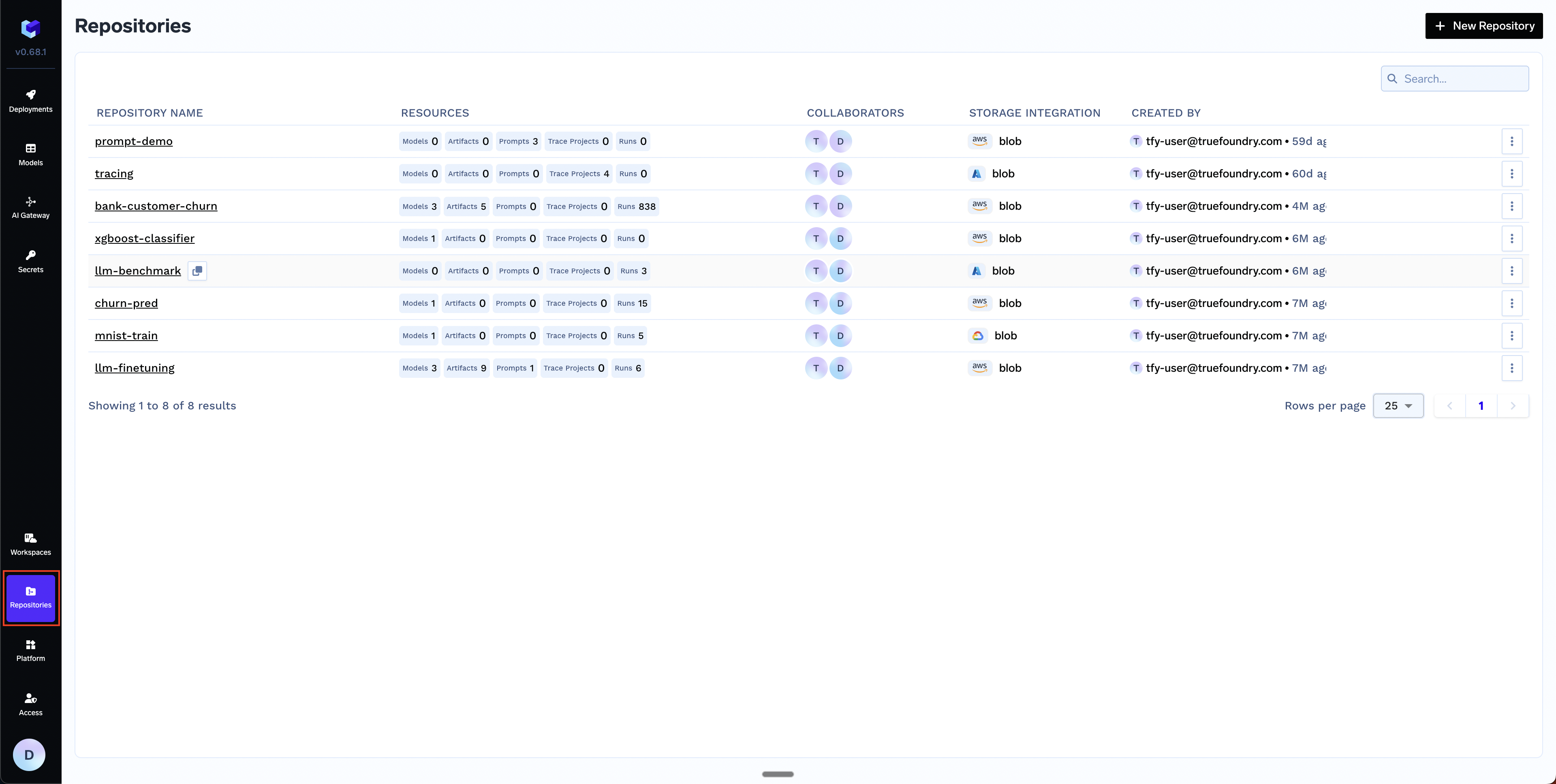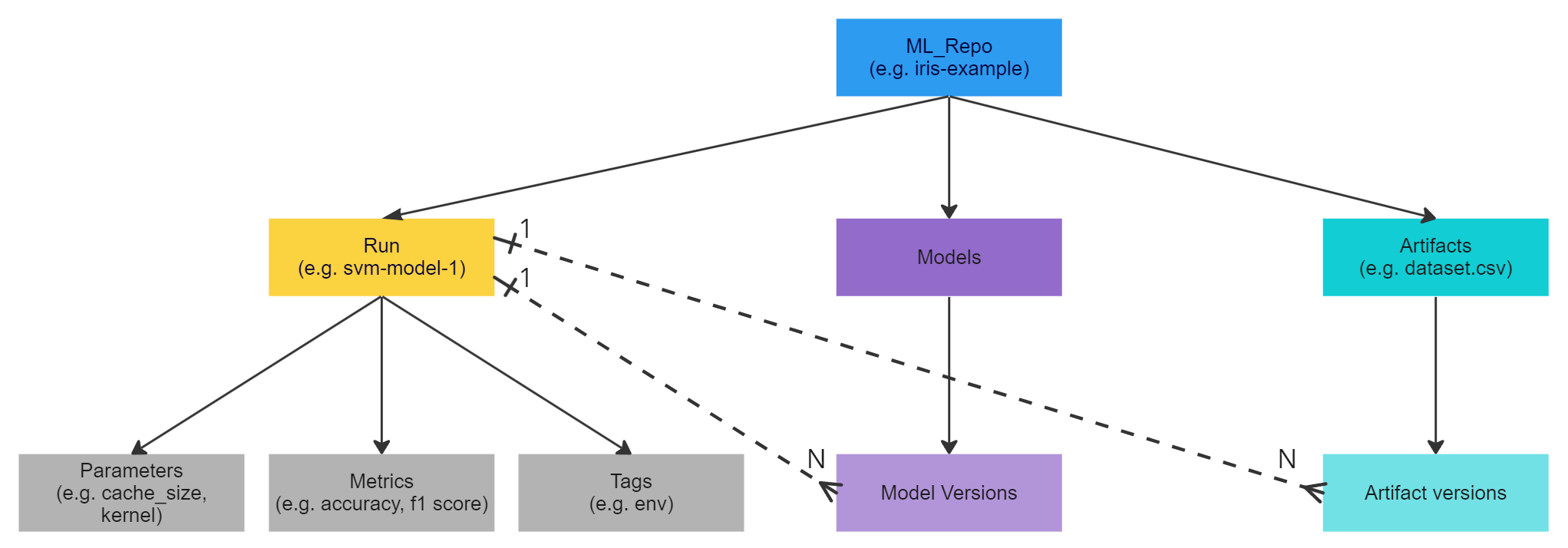
Each repository is backed by a Blob Storage (S3, GCS, Azure Blob, MinIO, etc) to store the data in the repo. Hence, to create a ML Repo, we need to connect one or more Blob Storages to Truefoundry.Two repositories can be linked to different paths within the same blob storage - however, one repository cannot be linked to multiple blob storages.
- Models : Model comprises of model file and some metadata. Each Model can have multiple versions.
- Artifacts : Artifact is a collection of files. Each Artifact can have multiple versions.
- Prompts : Prompts are used to store the inputs to LLMs to use in applications / agents.
- Runs : A run represents a single experiment which in the context of Machine Learning is one specific model (say Logistic Regression), with a fixed set of hyper-parameters. Metrics, and parameters (details below) are all logged under a specific run. A run can also have links to models, artifacts, prompts that were either created in that run or used in that run.
- Parameters: Parameters or HyperParameters that define your experiment and Machine Learning model. For example,
learning_rate, cache_size. - Metric: Metrics are values that help you to evaluate and compare different runs. For example,
accuracy, f1 score. - Tags: Tags are labels for a run. A tag is represented by a string tag name and value. For example,
env.
- Parameters: Parameters or HyperParameters that define your experiment and Machine Learning model. For example,
